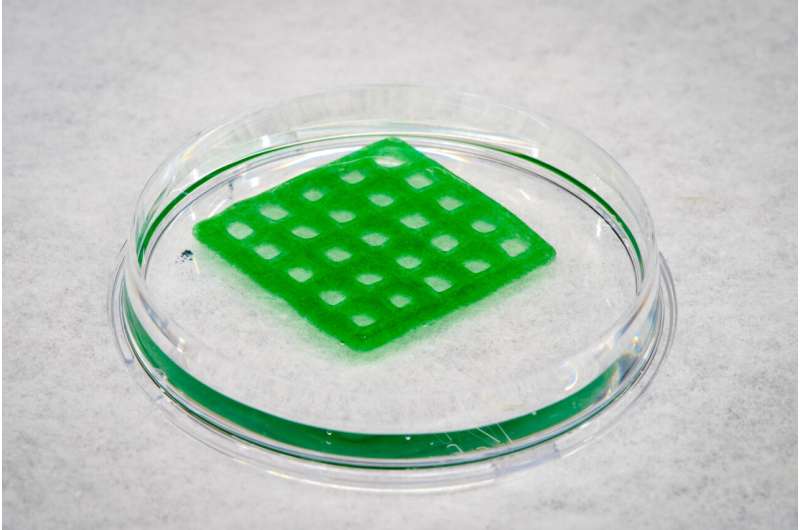
Researchers at the University of California San Diego created a new kind of material which could be used to offer an eco-friendly and sustainable solution for cleaning pollutants from water.
It is a 3D printed structure that is made from a polymer derived from seaweed and bacteria that are genetically modified to produce an enzyme capable of transforming various organic pollutants into benign molecule. The bacteria are also designed to self-destruct when exposed to a molecule known as theophylline. This molecule is found in chocolate and tea. It is a good way to get rid of them once they’ve done their work.
Researchers describe the new material for decontamination in a published paper in Nature Communications.
It is a combination of a bio-based system and a polymer that creates a living material capable of responding to stimuli. Regular synthetic materials are not able to do this, said Jon Pokorski a professor at UC San Diego’s Department of Nanoengineering who led the research.
This work was a collaborative effort between engineers, materials scientists and biologists at the UC San Diego Materials Research Science and Engineering Center. The multidisciplinary team includes molecular biologists Susan Golden and James Golden, as well as nanoengineering prof. Shaochen Chen.
Susan Golden, a member of the School of Biological Sciences faculty, said: “This collaboration has allowed us to apply knowledge of genetics and physiology of cyanobacteria in order to create a material that is alive.” Now we can think about how to engineer novel functions into the cyanobacteria in order to create more useful products.
Researchers used cyanobacteria, a water-dwelling photosynthetic bacteria, to create the living material for this study. They hydrated alginate (a natural polymer made from seaweed) into a gel, and then mixed it together with the gel.
The mixture was put into a 3D-printer. The researchers tested various 3D-printed geometries and found that a grid structure was the best for keeping bacteria alive. The chosen shape is characterized by a large surface-to-volume ratio. This allows the bacteria to be located near the surface of the material to gain access to nutrients, gases, and light.
This material is more effective in decontamination due to its increased surface area.
Researchers genetically engineered cyanobacteria from their material as a proof-of concept experiment to continuously produce a decontaminating enzymatic called laccase. Studies have shown laccase’s ability to neutralize various organic pollutants, including bisphenol A(BPA), anti-biotics, pharmaceuticals drugs and dyes.
Researchers in this study demonstrated that the material they developed can be used to remove the dye-based pollution indigo carmine. Indigo carmine is a blue color dye widely used by the textile industry for the coloring of denim. The material tested decolored a water-based solution that contained the dye.
Researchers also found a way to eradicate cyanobacteria once the pollutants had been removed. They genetically engineered bacteria to respond a molecule known as theophylline. The molecule causes the bacteria to release a protein which destroys their cell.
Pokorski said, “The living material will act on the pollutants of interest and then a small molecular can be added to kill the bacteria.” This will eliminate any worries about genetically modified bacteria in the environment.
Researchers note that a better solution is for bacteria to destroy themselves, without adding chemicals. The researchers will continue to pursue this direction in the future.
Pokorski said, “Our goal is making materials that respond to stimuli already present in the surrounding environment.”
We’re excited by the new materials that we can develop. Researchers with expertise in both materials and biological sciences can achieve this type of research when they combine forces. Our interdisciplinary research team at the UC San Diego MRSEC has made this possible.
For more information, please visit:
Debika Datta, et al. Phenotypically complicated living materials containing engineered Cyanobacteria. Nature Communications (2023). DOI: 10.1038/s41467-023-40265-2
If you want to know more about the services that we provide, please contact us.
University of California San Diego
Citation:
3D-printed “living material” could clean up contaminated waters (2023, Sept. 5)
Retrieved on 5 September 2023
from https://phys.org/news/2023-09-3d-printed-material-contaminated.html
This document is protected by copyright. No fair trade is allowed, except for private research or study.
Parts may not be reproduced without permission. This content is only provided as information.